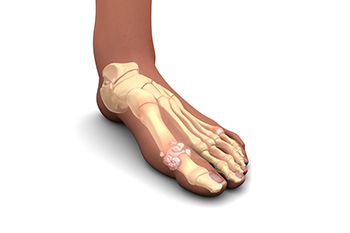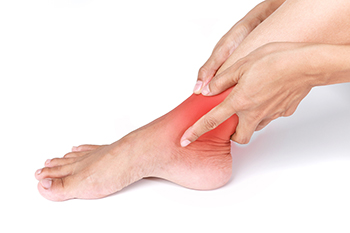Blog
Three Tips for Preventing Falls

As an individual gets older and older, their risk of suffering a dangerous trip or fall increases. Many things can make seniors more likely to trip. For example, having poor eyesight and taking medication that makes one feel dizzy as a side effect can increase their likelihood of falling. However, many factors are related to the feet that can also make falling likely. For example, ill-fitting footwear that is either too loose, bulky, or slippery can be dangerous. Instead of wearing this kind of footwear, it is recommended that seniors try to use shoes with non-slip soles. This will enable the senior to get a better grip on the ground, making tripping less probable. Additionally, to prevent falls at the very beginning of the day, a senior might consider ensuring that their feet can easily touch the floor from a seated position on their bed. When a senior takes their first steps of the day, they must do everything they can to increase their stability. Having their feet comfortably reach the floor from their bed is a great start. They might even try sitting in an upright position for a few minutes before putting their weight on their feet at the beginning of the day to stimulate blood flow. All of this makes falling less likely when taking the first steps of the day. If you are a senior looking to prevent a dangerous fall, contact a podiatrist.
Preventing falls among the elderly is very important. If you are older and have fallen or fear that you are prone to falling, consult with one of our podiatrists from Pennsylvania. Our doctors will assess your condition and provide you with quality advice and care.
Every 11 seconds, an elderly American is being treated in an emergency room for a fall related injury. Falls are the leading cause of head and hip injuries for those 65 and older. Due to decreases in strength, balance, senses, and lack of awareness, elderly persons are very susceptible to falling. Thankfully, there are a number of things older persons can do to prevent falls.
How to Prevent Falls
Some effective methods that older persons can do to prevent falls include:
- Enrolling in strength and balance exercise program to increase balance and strength
- Periodically having your sight and hearing checked
- Discuss any medications you have with a doctor to see if it increases the risk of falling
- Clearing the house of falling hazards and installing devices like grab bars and railings
- Utilizing a walker or cane
- Wearing shoes that provide good support and cushioning
- Talking to family members about falling and increasing awareness
Falling can be a traumatic and embarrassing experience for elderly persons; this can make them less willing to leave the house, and less willing to talk to someone about their fears of falling. Doing such things, however, will increase the likelihood of tripping or losing one’s balance. Knowing the causes of falling and how to prevent them is the best way to mitigate the risk of serious injury.
If you have any questions, please feel free to contact one of our offices located in Plymouth Meeting and Ambler, PA . We offer the newest diagnostic and treatment technologies for all your foot care needs.
What Does Gout Feel and Look Like?

Gout can negatively impact your overall health and well-being. It is therefore important to make yourself familiar with the symptoms of gout in case you ever develop this condition. Gout is a specific kind of arthritis that affects joints in the toes of the feet. It is characterized by the formation of crystals around a joint which can ultimately lead to inflammation and severe pain. One sign that you might have gout in the joints of your toes is that the affected area may become hot and significantly tender to the touch. Additionally, you might notice a change of color in the skin–namely, the skin surrounding the affected joint can become bright red and shiny. Lastly, you may notice that the affected area becomes significantly swollen and inflamed. These are all very characteristic signs of gout and if you find yourself exhibiting any of these signs, you should contact a podiatrist. Upon visiting the podiatrist, you can receive an accurate diagnosis and receive the care that you need for your gout.
Gout is a foot condition that requires certain treatment and care. If you are seeking treatment, contact one of our podiatrists from Pennsylvania. Our doctors will treat your foot and ankle needs.
What Is Gout?
Gout is a type of arthritis caused by a buildup of uric acid in the bloodstream. It often develops in the foot, especially the big toe area, although it can manifest in other parts of the body as well. Gout can make walking and standing very painful and is especially common in diabetics and the obese.
People typically get gout because of a poor diet. Genetic predisposition is also a factor. The children of parents who have had gout frequently have a chance of developing it themselves.
Gout can easily be identified by redness and inflammation of the big toe and the surrounding areas of the foot. Other symptoms include extreme fatigue, joint pain, and running high fevers. Sometimes corticosteroid drugs can be prescribed to treat gout, but the best way to combat this disease is to get more exercise and eat a better diet.
If you have any questions please feel free to contact one of our offices located in Plymouth Meeting and Ambler, PA . We offer the newest diagnostic and treatment technologies for all your foot and ankle needs.
Ankle Arthritis

While the ankle joint is less likely to be affected by arthritis than other joints, when it is, it means that the tibiotalar joint – the joint between the shin bone and ankle bone – is worn out. The most common cause of this condition is a previous injury, such as an ankle fracture. In such cases, something called osteonecrosis can result from ankle injuries, where there is damage to the blood flow to a portion of the bone that can then lead to ankle arthritis. Other causes of ankle arthritis are rheumatoid arthritis (which can cause joint inflammation and damage to the cartilage), infections of a joint leading to damage of cartilage cells, being overweight, placing a larger burden of weight on the ankle joint, and possibly genetic factors. The most common symptom of ankle arthritis is joint pain. Other indicators of this condition include stiffness in the ankle, swelling in the joint, bone spurs on the joint, deformity of the joint, and a feeling of instability in the joint. One is less apt to feel tingling and numbness in the feet and toes from ankle arthritis due to irritation of the nerves, but it can happen. Changes in footwear, adding cushioned inserts in shoes, using a brace to help hold the ankle in position, and modification of activity can relieve discomfort associated with ankle arthritis. Sometimes, however, surgery is necessary. If your ankle hurts and you feel you might have ankle arthritis, it is suggested that you see a podiatrist for proper diagnosis and customized treatment.
Arthritis can be a difficult condition to live with. If you are seeking treatment, contact one of our podiatrists from Pennsylvania. Our doctors can provide the care you need to keep you pain-free and on your feet.
Arthritic Foot Care
Arthritis is a term that is commonly used to describe joint pain. The condition itself can occur to anyone of any age, race, or gender, and there are over 100 types of it. Nevertheless, arthritis is more commonly found in women compared to men, and it is also more prevalent in those who are overweight. The causes of arthritis vary depending on which type of arthritis you have. Osteoarthritis for example, is often caused by injury, while rheumatoid arthritis is caused by a misdirected immune system.
Symptoms
- Swelling
- Pain
- Stiffness
- Decreased Range of Motion
Arthritic symptoms range in severity, and they may come and go. Some symptoms stay the same for several years but could potentially get worse with time. Severe cases of arthritis can prevent its sufferers from performing daily activities and make walking difficult.
Risk Factors
- Occupation – Occupations requiring repetitive knee movements have been linked to osteoarthritis
- Obesity – Excess weight can contribute to osteoarthritis development
- Infection – Microbial agents can infect the joints and trigger arthritis
- Joint Injuries – Damage to joints may lead to osteoarthritis
- Age – Risk increases with age
- Gender –Most types are more common in women
- Genetics – Arthritis can be hereditary
If you suspect your arthritis is affecting your feet, it is crucial that you see a podiatrist immediately. Your doctor will be able to address your specific case and help you decide which treatment method is best for you.
If you have any questions, please feel free to contact one of our offices located in Plymouth Meeting and Ambler, PA . We offer the newest diagnostic and treatment technologies for all your foot care needs.

